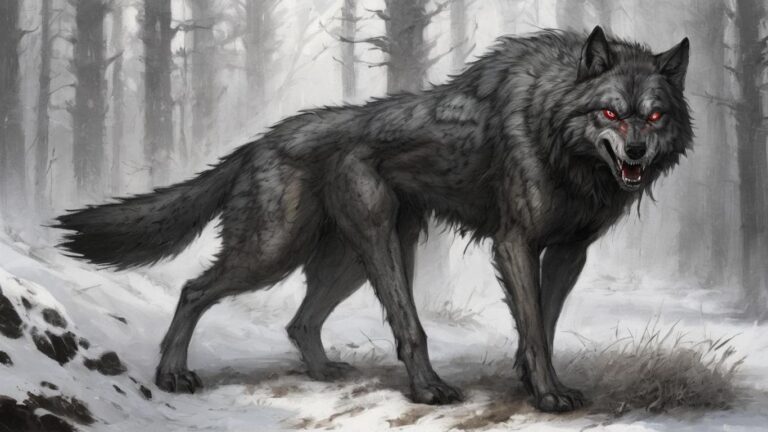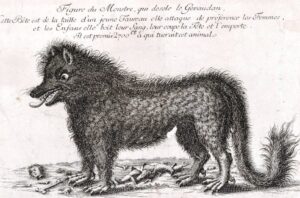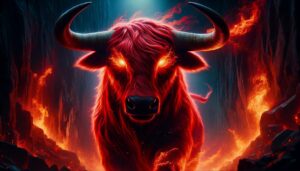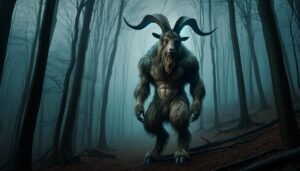Table of Contents
What is the Beast of Gévaudan?
The Beast of Gévaudan refers to a series of attacks by a mysterious creature or creatures that occurred in the Gévaudan region of France between 1764 and 1767. The attacks gained notoriety due to the brutality of the killings and the fear they instilled in the local population.
Descriptions of the Beast varied, but it was often depicted as a large, wolf-like or hyena-like creature. The attacks resulted in numerous deaths, and efforts to hunt and kill the Beast became a significant undertaking, involving hunters, soldiers, and local residents.
The identity of the Beast of Gévaudan remains uncertain, and various theories have been proposed, ranging from a large wolf or a pack of wolves to a hyena, a lion, or even a cryptid or supernatural entity. In 1767, a large wolf-like creature was killed by a local hunter, and some considered this event as the end of the Beast’s reign of terror.
The Beast of Gévaudan has captured the imagination and has been the subject of various books, documentaries, and fictionalized accounts. The mystery surrounding its identity and the historical context of the attacks continue to be of interest to researchers and enthusiasts.
Characteristics
Physical Description
The exact physical description of the Beast of Gévaudan varies due to the inconsistent accounts from historical sources. Different witnesses provided different details, and the descriptions often depended on the context of the sightings and the fear generated by the attacks. However, some common elements are often mentioned in various reports:
Wolf-Like Appearance: Many descriptions likened the Beast to a large wolf, though often larger than a typical wolf. It was said to be robust, powerful, and covered in fur.
Red or Black Fur: Some accounts mentioned that the Beast had reddish or black fur. The color of the fur was a notable detail that stood out in the descriptions.
Large Size: Witnesses often emphasized the creature’s size, describing it as much larger than a normal wolf. Some reports suggested it was as big as a calf or even a horse.
Unusual Markings: Some witnesses reported that the Beast had unusual markings or features, such as a stripe along its back or a reddish mane.
Powerful Jaws and Teeth: The Beast was often described as having powerful jaws and large, sharp teeth, contributing to its perceived threat to humans and livestock.
Behavior
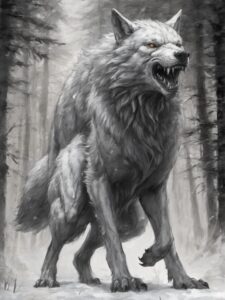
The behavior of the Beast of Gévaudan, as reported in historical accounts, was characterized by a series of violent attacks on humans and livestock. The creature’s actions generated widespread fear and panic in the Gévaudan region of France between 1764 and 1767. While the details of the Beast’s behavior varied in different reports, some common elements include:
Predatory Attacks: The Beast was responsible for a significant number of attacks on both humans and animals, with a particular focus on young people and lone individuals.
Brutality: The attacks were marked by a level of brutality that went beyond what would be expected from typical predator behavior. There were reports of the Beast mutilating its victims and displaying a degree of ferocity uncommon in local wildlife.
Persistence: The Beast was notably persistent in its attacks, seemingly undeterred by efforts to capture or kill it. This persistence contributed to the prolonged period of fear and uncertainty in the region.
Elusiveness: The Beast was reported to be elusive, making it difficult for hunters and authorities to track and apprehend. Its ability to avoid capture added to the mystery surrounding its identity.
Nocturnal Activity: Many attacks occurred during the nighttime, leading to a heightened sense of fear and vulnerability among the local population.
Variety of Locations: The Beast was reported in various locations throughout the Gévaudan region, contributing to the belief that there might have been more than one creature involved in the attacks.
Despite numerous efforts to hunt and kill the Beast, the attacks continued for several years. The final episode in the saga occurred in 1767 when a local hunter named Jean Chastel allegedly shot and killed a large wolf-like creature, believed by some to be the Beast. After this event, the attacks ceased, and the Gévaudan region gradually returned to a sense of normalcy. The true identity of the Beast remains a subject of speculation and mystery, with theories ranging from a particularly aggressive wolf to more exotic possibilities.
Killings
The killings attributed to the Beast of Gévaudan were a series of brutal attacks on humans and livestock that occurred in the Gévaudan region of France between 1764 and 1767. The creature, described as a large and ferocious wolf-like beast, was responsible for a significant number of deaths, and its actions generated widespread fear and panic.
Key points regarding the killings:
Human Victims: The Beast primarily targeted humans, and many of its victims were young people or lone individuals. The attacks were marked by a level of brutality that went beyond typical predator behavior.
Violence and Mutilation: The killings were particularly brutal, with reports of the Beast mutilating its victims. The violence and ferocity of the attacks contributed to the terror experienced by the local population.
Persistence of Attacks: The attacks were persistent, occurring over a period of several years. Despite efforts by hunters, soldiers, and local residents to track and kill the Beast, it continued to evade capture, contributing to the prolonged sense of fear and uncertainty.
Geographical Spread: The Beast’s attacks were reported in various locations throughout the Gévaudan region, making it difficult for authorities to predict or prevent its movements.
Nocturnal Activity: Many of the killings took place during the nighttime, adding to the fear and vulnerability felt by the residents. The Beast’s preference for nocturnal activities also made it challenging to track.
Hunting Expeditions: Numerous hunting expeditions were organized to capture or kill the Beast. These efforts involved professional hunters, soldiers, and local residents armed with firearms, traps, and other means. Despite these endeavors, the Beast continued its attacks.
The killings eventually came to an end in 1767, following an encounter with a local hunter named Jean Chastel. He allegedly shot and killed a large wolf-like creature, believed by some to be the Beast. After this event, the attacks ceased, and the Gévaudan region gradually returned to a state of normalcy.
Hunts
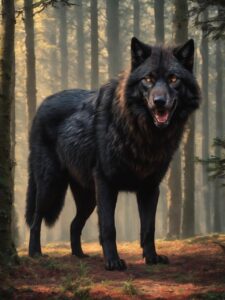
The hunts for the Beast of Gévaudan were extensive and involved concerted efforts by local authorities, hunters, soldiers, and the population to capture or kill the mysterious and deadly creature that terrorized the region between 1764 and 1767. The Beast’s attacks, particularly on humans, led to widespread fear, and the authorities responded with various organized hunting expeditions. Here are key aspects of the hunts:
Local Response: Initially, local residents took it upon themselves to organize hunting parties in an attempt to deal with the threat posed by the Beast. These early efforts, however, were not successful in eliminating the creature.
Deployment of Professional Hunters: As the attacks continued and the death toll rose, the authorities intervened and sent professional hunters to the Gévaudan region. These skilled hunters were tasked with tracking down and eliminating the Beast.
Soldiers and Military Involvement: Due to the severity of the situation and the failure of initial attempts, military personnel were eventually deployed to assist in the hunts. Soldiers were sent to aid in the tracking and killing of the Beast.
Use of Firearms and Traps: The hunters and soldiers used various means to capture or kill the Beast. Firearms, including muskets and rifles, were employed, along with traps and other traditional hunting methods.
Large-Scale Expeditions: The efforts to eliminate the Beast involved organized and large-scale hunting expeditions. These expeditions often included multiple hunters, military personnel, and local residents.
The King’s Bounty: King Louis XV became aware of the situation and issued a royal edict offering a reward for the capture or killing of the Beast. This bounty further motivated hunters and soldiers to intensify their efforts.
Jean Chastel’s Encounter: The hunts came to an end in 1767 when a local hunter named Jean Chastel allegedly shot and killed a large wolf-like creature. Chastel’s encounter marked the conclusion of the prolonged saga of the Beast of Gévaudan.
Despite the extensive efforts, the identity of the Beast remains a subject of historical mystery. The killings ceased after Chastel’s encounter, and the Gévaudan region gradually recovered from the fear and uncertainty caused by the attacks. The Beast’s legacy continues to capture the imagination as a historical enigma.
Art and Literature
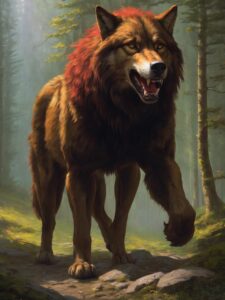
The Beast of Gévaudan has left a lasting impact on art and literature, becoming the subject of numerous creative works that explore the mystery, horror, and folklore surrounding the creature. Here are some ways in which the Beast has been represented in art and literature:
Historical Accounts and Documentation: The events surrounding the Beast of Gévaudan were documented in historical records, newspaper articles, and official reports. These accounts served as source material for subsequent artistic and literary interpretations.
Artistic Depictions: Visual artists have depicted the Beast in various paintings, illustrations, and sculptures. These artworks often capture the terror and suspense associated with the creature, portraying scenes of the Beast attacking its victims or being hunted by brave individuals.
Literary Works: The Beast of Gévaudan has inspired numerous works of fiction and non-fiction. Writers have explored the mystery and horror of the Beast in novels, short stories, and historical accounts. Some authors have taken creative liberties to weave supernatural or speculative elements into the narrative.
Folklore and Local Legends: The story of the Beast has become ingrained in the folklore of the Gévaudan region. Local legends, oral traditions, and folktales have preserved and passed down the accounts of the Beast’s attacks and the efforts to hunt it.
Film and Television: The Beast of Gévaudan has been featured in various films and television productions. These adaptations often blend historical elements with fictionalized accounts, emphasizing the horror and suspense associated with the creature.
Theater Productions: The dramatic and mysterious nature of the Beast’s story has made it suitable for theatrical adaptations. Plays and other dramatic performances have explored the historical events and cultural impact of the Beast.
Historical Research and Investigation: Some works delve into the historical research and investigations surrounding the Beast of Gévaudan. These may include non-fiction books that examine the primary sources, theories about the Beast’s identity, and the impact on local communities.
Cultural Influence: The Beast has become a cultural symbol, representing the mysterious and the monstrous. It continues to be referenced in popular culture, showcasing its enduring influence on the collective imagination.
The enduring fascination with the Beast of Gévaudan reflects the way historical events and mysteries can captivate artists and writers, inspiring them to create a diverse range of works that explore the complexities of the human experience, fear, and the unknown.
Explanations of the Creature
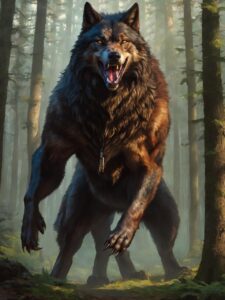
The identity of the Beast of Gévaudan remains a historical mystery, and various theories have been proposed to explain the nature of the creature responsible for the attacks in the 18th century. While the true identity of the Beast is not definitively known, here are some of the theories and explanations that have been suggested:
Large Wolves or Wolf Hybrids:
Some historians and researchers propose that the Beast could have been an unusually large and aggressive wolf or a pack of wolves. However, this theory faces challenges, as wolves typically do not exhibit the level of aggression and brutality attributed to the Beast.
Hyena: A theory suggested that the Beast might have been a hyena, possibly brought to the region as an exotic pet and later released. Hyenas have powerful jaws and can be aggressive, but there is limited evidence to support this theory.
Cryptid or Unknown Species: Some have suggested that the Beast could have been an undiscovered or extinct species, a cryptid. This theory allows for more speculative explanations, considering the lack of a clear match with known local wildlife.
Diseased or Rabid Animal: Another theory proposes that the Beast may have been an animal suffering from disease, such as rabies. Rabid animals can exhibit aggressive and erratic behavior, but this theory has limitations in explaining the extended duration of the attacks.
Exaggerated Accounts: Skeptics suggest that the accounts of the Beast’s size, appearance, and actions may have been exaggerated or distorted over time. Fear and panic in the local population could have contributed to sensationalized descriptions of the creature.
Supernatural or Mythical Explanation: In local folklore, some explanations veer into the supernatural, suggesting that the Beast was a mythical creature or a supernatural entity. This perspective often involves elements of local legends and beliefs.
Human Perpetrator: A controversial theory proposes that the Beast may have been a trained or domesticated creature set loose by a human perpetrator. This theory suggests a deliberate effort to create fear and chaos in the region.
What was the real beast of Gévaudan?
The true identity of the Beast of Gévaudan, which terrorized the region in the 18th century, remains a historical mystery. Various theories have been proposed, ranging from a large wolf or wolf hybrid to more exotic possibilities like a hyena or a cryptid. The definitive identity of the creature is unknown.
Who is the Beast of Gévaudan spoiler?
The term "Beast of Gévaudan" has been used in various contexts, including historical references, folklore, and modern works of fiction. If you are referring to a specific spoiler related to a particular story or adaptation, it would be necessary to provide more details for a precise response.
What is the Beast of Gévaudan's name?
In historical accounts and folklore, the Beast of Gévaudan is not given a specific personal name. It is generally referred to as the "Beast of Gévaudan" due to the region where the attacks occurred.
Who is the Beast of Gévaudan in Vanitas?
If you are referring to a character named the "Beast of Gévaudan" in a specific work, such as "Vanitas," it would depend on the context of that particular storyline or adaptation. Different works may interpret the concept of the Beast of Gévaudan in unique ways.
Was the Beast of Gévaudan a human?
The historical Beast of Gévaudan, as documented in the 18th-century attacks, was generally described as a large and ferocious creature, with theories ranging from a wolf to more exotic possibilities. It was not considered to be a human.
Was the Beast of Gévaudan a serial killer?
The term "serial killer" is typically applied to humans who commit a series of murders. The Beast of Gévaudan was a mysterious and deadly creature that attacked humans and livestock, and its actions were perceived as predatory rather than driven by human motives.
Why was the Beast of Gévaudan so strong?
The perceived strength of the Beast of Gévaudan may have been exaggerated in historical accounts and folklore. Reports of its strength and ferocity contributed to the fear and mystery surrounding the creature, but the actual nature of its strength remains speculative.
Did a Werewolf really terrorize France in the 1700s?
The Beast of Gévaudan is often associated with werewolf legends, but historical records and accounts do not conclusively identify it as a werewolf. The creature's true identity remains unknown, and it was not definitively proven to be a supernatural entity.
How do you pronounce Gévaudan?
Gévaudan is pronounced approximately as "zhay-voh-dahn," with a soft "zh" sound at the beginning, a nasalized "oh" in the middle, and emphasis on the last syllable.
